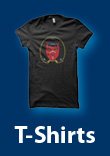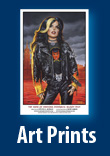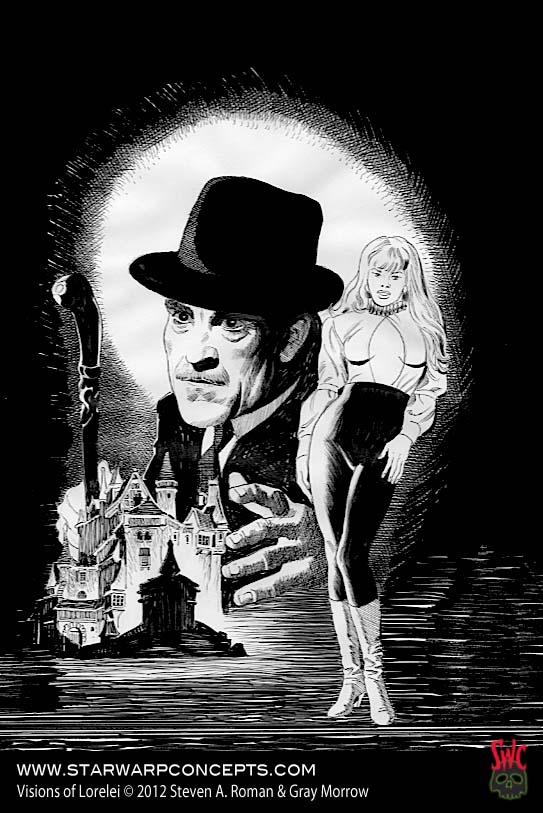 “I won’t draw it. It’s one of the most ridiculous costume designs I’ve ever seen.”
“I won’t draw it. It’s one of the most ridiculous costume designs I’ve ever seen.”
So said Gray Morrow—legendary artist of Zatanna, Man-Thing, the Vigilante, Creepy, Eerie, Jonah Hex, Star Trek, and his own Edge of Chaos—back in 2001, when I approached him about drawing a cover for Lorelei, Volume 2. I’d been given his contact information by Frank (Red Sonja) Thorne, who’d already signed up to do a cover for the series relaunch. When I spoke with him, Morrow was eager to contribute his own version of my succubus character—partly because mainstream comic publishers had cast him aside in an era of Jim Lee and Rob Liefeld clones, and he needed work; and partly because I was so respectful to him. (About a minute into our conversation I’d apologized that I couldn’t offer a commission fee that accurately reflected his worth as one of comics’ major talents.)
Morrow liked the concept of the character and its homage to classic horror, so we worked out a deal and I sent him reference material to get started. In almost no time at all I was looking at four cover sketches. There was just one thing about them…
“The hair isn’t as long as it needs to be,” I said, “and the blouse isn’t as poofy as what I sent you. Could you adjust those?”
“No,” Morrow said firmly. “I won’t draw it. It’s one of the most ridiculous costume designs I’ve ever seen.”
I laughed, because Morrow wasn’t the first artist to express their…displeasure with what they considered an overly complicated design, with all those ruffles and folds and billowy sleeves on her blouse, and that lava flow of hair cascading down her back. For someone like Morrow, who was used to drawing people in skintight costumes or street clothes, Lori’s outfit was just too damn busy. Ultimately, he did a simplified version of her design, as you see above.
But from where, exactly, did Lori get that “ridiculous costume”? Would you believe an Ozzy Osbourne album cover? It’s true!
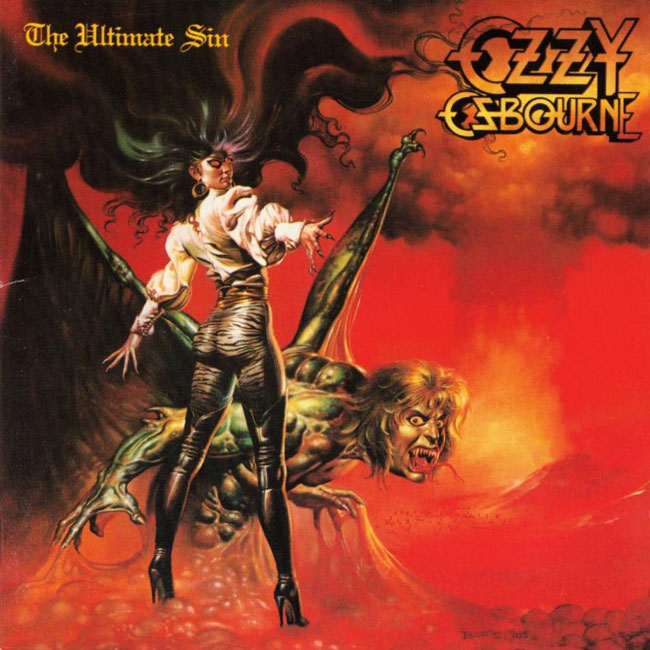 At some point in 1986, I’d been toying with the idea of writing and drawing a comic-book character that would be my tribute to Vampirella and other 1970s horror comics I’d read as a teen; unlike Vampirella, though, she’d be a succubus, because even back then vampires were oversaturating pop culture. I had a name for the character—Lorelei—but no idea what she’d look like, other than being a redhead. Then one day I walked into a Greenwich Village record store—it was either Revolver Records or It’s Only Rock N Roll, on West 8th Street; both are now long gone—and saw a poster of the album cover you see here hanging from the ceiling. Now I’ve never been an Ozzy Osbourne fan—I leaned more toward Alice Cooper in those days—so the fact that The Ultimate Sin was his new solo album didn’t really register with me, but that Boris Vallejo painting sure did—especially that demon lady’s costume…
At some point in 1986, I’d been toying with the idea of writing and drawing a comic-book character that would be my tribute to Vampirella and other 1970s horror comics I’d read as a teen; unlike Vampirella, though, she’d be a succubus, because even back then vampires were oversaturating pop culture. I had a name for the character—Lorelei—but no idea what she’d look like, other than being a redhead. Then one day I walked into a Greenwich Village record store—it was either Revolver Records or It’s Only Rock N Roll, on West 8th Street; both are now long gone—and saw a poster of the album cover you see here hanging from the ceiling. Now I’ve never been an Ozzy Osbourne fan—I leaned more toward Alice Cooper in those days—so the fact that The Ultimate Sin was his new solo album didn’t really register with me, but that Boris Vallejo painting sure did—especially that demon lady’s costume…
By the time I got home, I’d decided that Lorelei would have an outfit just like that…except I couldn’t recall the exact details. I remembered a white blouse with big sleeves, and some kind of tights or tight pants with boots, but I’d forgotten the colors. And since Vallejo’s art focused more on the woman’s posterior (as a good number of his paintings do), I’d have to figure out what to do with the front of Lori’s blouse on my own.
Well, red boots to go with Lori’s red hair made sense to me, as did matching a pair of black tights with the white blouse. The billowy sleeves and harlequin collar were the final touches. The end result was sort of a gothy superhero costume. As for what to do with the front of the blouse, well, this being a 1980s horror comic starring a woman who uses sex as a lure to draw in her victims…when in doubt, unbutton the shirt and show off her cleavage.
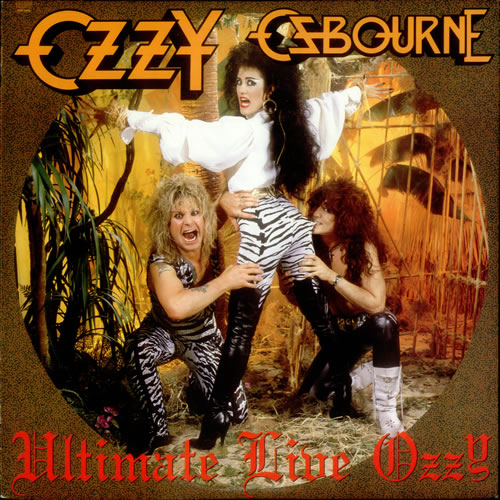 Sometime later, I finally saw the real-life version of that album-cover outfit, in the music video for the track “Shot in the Dark”. The big hair, the poofy blouse, the striped tights were all there, worn by what the Internet says was a Los Angeles Rams cheerleader (so you can trust its accuracy). I had two reactions: “Oh, good. Lori’s outfit isn’t a complete knockoff of it”; and “Where did they ever get that blouse in the first place?” It’s a question that popped up again in later years, as I toyed with the idea of a Lorelei spokesmodel. By 1993, when I launched the first full-sized Lori series, just about every comic publisher, large and small, had one or was getting one to draw male readers to their booths. I ultimately rejected the idea, because a) it would have been too expensive to assemble that outfit and wig, and b) I realized that in most cases, the people who interacted with the models had a tendency to remember the model, but not what they were promoting. And what’s the point in doing a promotion like that if the takeaway was:
Sometime later, I finally saw the real-life version of that album-cover outfit, in the music video for the track “Shot in the Dark”. The big hair, the poofy blouse, the striped tights were all there, worn by what the Internet says was a Los Angeles Rams cheerleader (so you can trust its accuracy). I had two reactions: “Oh, good. Lori’s outfit isn’t a complete knockoff of it”; and “Where did they ever get that blouse in the first place?” It’s a question that popped up again in later years, as I toyed with the idea of a Lorelei spokesmodel. By 1993, when I launched the first full-sized Lori series, just about every comic publisher, large and small, had one or was getting one to draw male readers to their booths. I ultimately rejected the idea, because a) it would have been too expensive to assemble that outfit and wig, and b) I realized that in most cases, the people who interacted with the models had a tendency to remember the model, but not what they were promoting. And what’s the point in doing a promotion like that if the takeaway was:
“Hey, dude, you remember that redheaded chick from that booth?”
“Yeah, she was hot!”
“You remember what she was selling?”
“Nah. You?”
“Nope. But I got my picture taken with her! Check it out!”
“Sweeet!”
Yeah. Not really a good investment, I thought.
It wasn’t until 1988 that I started drawing Lori’s first appearance, but once I’d locked in that “ridiculous costume” in ’86 it was here to stay. And stay it has, now twenty-five years after Lori’s first published appearance in 1989. Gray Morrow—and all the other artists I’ve worked with who consider that blouse and all that hair to be a major pain in the ass—might not have been enamored with it, but I like it just fine.

